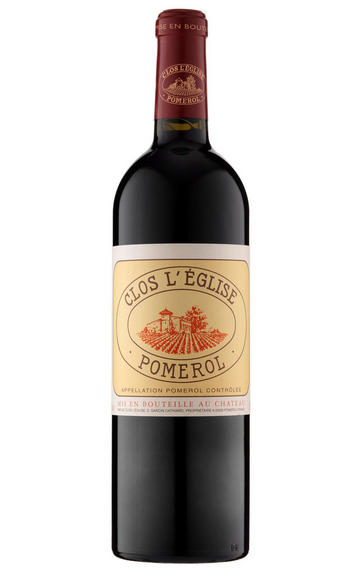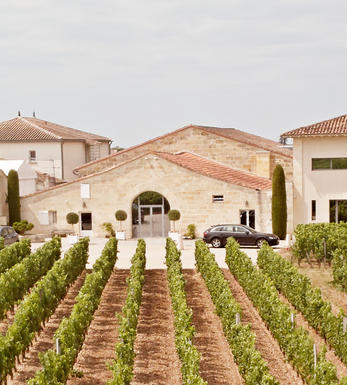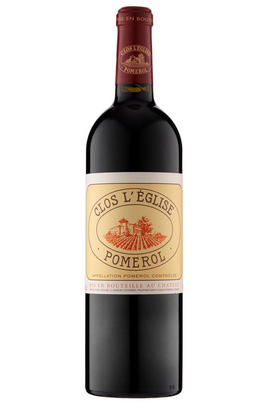
Critics reviews
Robert M. Parker, Jr. - 29/02/2012
About this WINE

Chateau Clos l'Eglise
Pomerol - owned by S.Garcan-Cathiard, this 6 ha property produces on average 2,800 cases per year. Located in the centre-east of the Pomerol appellation, next to Ch.Clinet, the property shares a similar climate to that enjoyed by both St.Emilion & Pomerol: more continental than the maritime Médoc with generally more spring rainfall, though less in summer & winter. Its vineyards (Merlot 57%; Cabernet Franc 36%; Cabernet Sauvignon 7%) lie on sandy-gravel topsoils, underpinned by a hard-pan clay subsoil. Fermentation in wooden vats before 24 months of maturation in new oak barrels.

Pomerol
Pomerol is the smallest of Bordeaux's major appellations, with about 150 producers and approximately 740 hectares of vineyards. It is home to many bijou domaines, many of which produce little more than 1,000 cases per annum.
Both the topography and architecture of the region is unremarkable, but the style of the wines is most individual. The finest vineyards are planted on a seam of rich clay which extends across the gently-elevated plateau of Pomerol, which runs from the north-eastern boundary of St Emilion. On the sides of the plateau, the soil becomes sandier and the wines lighter.
There is one satellite region to the immediate north, Lalande-de-Pomerol whose wines are stylistically very similar, if sometimes lacking the finesse of its neighbour. There has never been a classification of Pomerol wines.
Recommended Châteaux : Ch. Pétrus, Vieux Ch. Certan, Le Pin, Ch. L’Eglise-Clinet, Ch. La Conseillante, Ch. L’Evangile, Ch. Lafleur, Trotanoy, Ch. Nenin, Ch. Beauregard, Ch. Feytit-Clinet, Le Gay.

Merlot/Cabernet Franc
Merlot and Cabernet Franc are grape varieties commonly used in Bordeaux-style blends, particularly in the Bordeaux region of France. When these two grapes are blended, they can create a wine that combines the best characteristics of each variety.
Merlot is known for its smoothness, soft tannins, and ripe fruit flavours. It often contributes black cherry, plum, and chocolate flavours to the blend. The grapes are relatively easy to grow and ripen earlier than other Bordeaux varieties, making them versatile for blending.
Cabernet Franc, on the other hand, adds structure, depth, and complexity to the blend. It typically brings aromas of red fruits such as raspberry and strawberry, along with herbal notes like bell pepper and tobacco. These grapes have thinner skins and can be more challenging to cultivate, requiring specific growing conditions to reach their full potential.
When Merlot and Cabernet Franc are combined, the result is a well-balanced wine with various flavours and aromas. The blend often exhibits a Bordeaux wine's medium to full body, along with a smooth texture and moderate tannins. The specific flavour profile can vary depending on the proportions of each grape in the blend and the terroir and winemaking techniques employed.



Buying options
Add to wishlist
Description
The 2009 is one of the sexiest wines in Pomerol in this vintage, offering up notes of melted caramel, sweet mocha, blackberry and black cherry fruit, with hints of loamy soil and unsmoked cigar tobacco as well as a touch of white chocolate and some subtle toasty oak. Round, opulent and unctuously textured, with a full-bodied mouthfeel, fabulous purity, and no hard edges, this sumptuous, fleshy, lavishly rich Pomerol can be drunk now and over the next 25 years.
Robert M. Parker, Jr. - 29/02/2012
wine at a glance
Delivery and quality guarantee